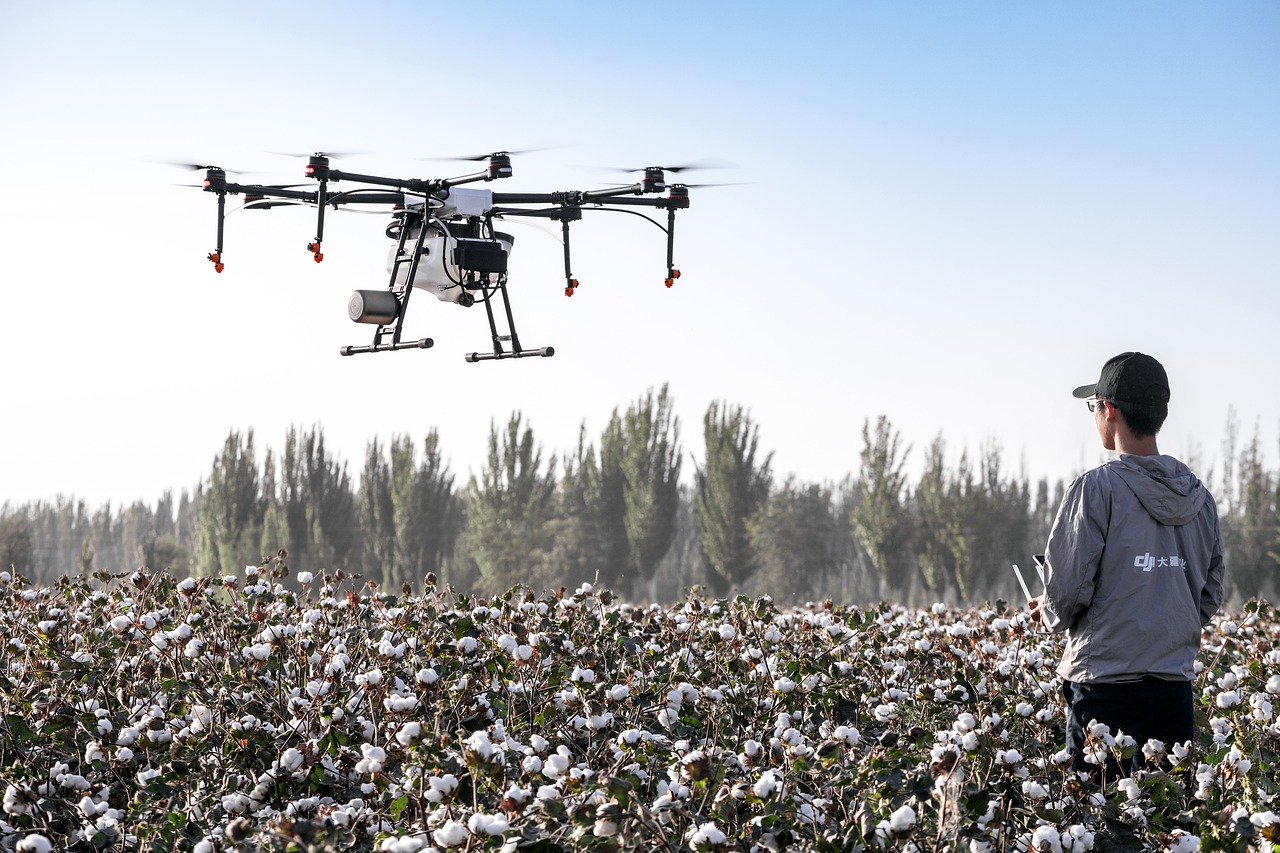Drones, or unmanned aerial vehicles (UAVs), have emerged as transformative tools in American agriculture, revolutionizing how farmers manage crops, livestock, and land. From precision farming to real-time monitoring, drones are enabling data-driven decisions that boost efficiency, reduce costs, and promote environmentally-friendly practices. However, their adoption faces hurdles, including regulatory, economic, and security concerns, particularly regarding Chinese-made drones. This article explores the types of drones used in agriculture, their applications, challenges to widespread adoption, security issues, and potential future innovations.
Types of Drones in Agriculture
Agricultural drones come in various forms, each suited to specific tasks. The primary categories include:
- Fixed-Wing Drones: Resembling small airplanes, these drones have long flight times and cover large areas, making them ideal for mapping and surveying vast farmlands. They are less maneuverable but excel in tasks requiring extended range, such as monitoring large fields or orchards.
- Multirotor Drones: With multiple propellers, these drones (e.g., quadcopters) are highly maneuverable and capable of hovering, making them suitable for detailed inspections and targeted applications like spraying or planting. Their shorter flight times limit their use to smaller areas.
- Hybrid Drones: Combining features of fixed-wing and multirotor designs, hybrid drones offer versatility, with longer flight times and the ability to hover. They are gaining popularity for tasks requiring both coverage and precision.
- Specialized Drones: Some drones are designed for niche tasks, such as heavy-lift drones for spraying fertilizers or pesticides, or thermal-imaging drones for livestock monitoring. These are often customized for specific agricultural needs.
Applications of Drones in American Farming
Drones are reshaping agriculture by providing farmers with actionable insights and automating labor-intensive tasks. Key applications include:
- Crop Monitoring and Mapping: Drones equipped with high-resolution cameras and multispectral sensors capture detailed images of fields, enabling farmers to assess crop health, detect pests, and monitor soil conditions. Normalized Difference Vegetation Index (NDVI) data helps identify areas of stress, optimizing irrigation and fertilization.
- Precision Spraying: Multirotor drones with spraying systems deliver pesticides, herbicides, or fertilizers with pinpoint accuracy, reducing chemical waste and environmental impact. For example, a drone can target specific areas affected by pests, unlike traditional blanket spraying.
- Planting and Seeding: Specialized drones can plant seeds in hard-to-reach areas, such as steep terrains or reforestation zones, by dispersing seed pellets. This is particularly useful for cover crops or rewilding projects.
- Livestock Management: Drones with thermal cameras monitor livestock, track herd movements, and detect health issues by identifying animals with abnormal body temperatures. They also help farmers check fences or locate stray animals across large ranches.
- Soil and Field Analysis: Drones collect data on soil moisture, topography, and nutrient levels, aiding in the creation of detailed field maps for variable rate applications (e.g., adjusting fertilizer based on soil needs).
- Irrigation Management: By identifying areas with water stress, drones help optimize irrigation systems, reducing water waste and ensuring efficient resource use.
According to a 2023 report by the USDA, drone usage in U.S. agriculture has grown steadily, with approximately 20% of large-scale farms adopting UAVs for at least one task, up from 10% in 2018.
Hurdles to Adoption
Despite their benefits, several challenges hinder widespread drone adoption in American farming:
- Cost: High-quality agricultural drones, especially those with advanced sensors, can cost between $5,000 and $20,000. For small and midsize farms, which make up 80% of U.S. agricultural operations, this upfront investment is often prohibitive. Additional costs for software, training, and maintenance further strain budgets.
- Regulatory Restrictions: The Federal Aviation Administration (FAA) imposes strict rules on drone operations, including a requirement for Part 107 certification for commercial use. Drones must operate within visual line of sight, below 400 feet, and away from restricted airspace. These regulations can limit scalability, particularly for large farms requiring beyond-visual-line-of-sight (BVLOS) operations.
- Technical Complexity: Operating drones and analyzing their data require technical skills that many farmers lack. While user-friendly software exists, interpreting multispectral data or integrating drone insights with existing farm management systems can be daunting.
- Infrastructure Limitations: Rural areas often lack reliable internet or cellular connectivity, which is critical for real-time data transmission and drone operation. Battery life also limits flight times, typically to 20–60 minutes, requiring frequent recharges or multiple drones for large-scale tasks.
- Weather Dependency: Drones are sensitive to adverse weather conditions like high winds, rain, or extreme temperatures, which can disrupt operations, especially during critical planting or harvesting seasons.
Security Concerns with Chinese-Made Drones
A significant concern in the U.S. is the dominance of Chinese manufacturers, particularly DJI, which controls over 70% of the global drone market. While DJI drones are cost-effective and feature-rich, their widespread use in agriculture has raised security issues:
- Data Privacy: Drones collect sensitive data, including field maps, crop yields, and farm layouts. Concerns persist that Chinese-made drones could transmit this data to servers in China, potentially compromising farm operations or national security. A 2020 U.S. Department of Defense ban on DJI drones for military use heightened these concerns.
- Supply Chain Risks: Reliance on foreign manufacturers raises fears of supply chain vulnerabilities, such as software backdoors or hardware tampering. In 2023, the U.S. Department of Commerce added DJI to its Entity List, restricting its access to American technology, though this has not banned its products outright.
- Legislative Pushback: Some states, like Florida and Texas, have proposed or enacted restrictions on Chinese-made drones for government and agricultural use, citing espionage risks. Farmers using these drones face uncertainty about future regulations.
To address these concerns, American companies like Skydio and Parrot are developing domestic alternatives, but their higher costs and limited market share make them less competitive. The USDA has also funded research into secure, U.S.-made drone technologies for agriculture, though widespread adoption remains years away.
Potential Future Applications
As technology advances, drones are poised to play an even larger role in American agriculture:
- Autonomous Swarms: Groups of drones working collaboratively could cover vast areas, performing tasks like planting, spraying, or monitoring simultaneously. Machine learning algorithms would enable real-time decision-making, such as adjusting spray patterns based on live crop data.
- AI Integration: Advanced artificial intelligence could enhance drone capabilities, enabling predictive analytics for pest outbreaks or yield forecasts. AI-driven drones might autonomously identify and treat problem areas without human intervention.
- BVLOS Operations: Regulatory changes allowing beyond-visual-line-of-sight flights would enable drones to cover larger farms efficiently, reducing labor costs and expanding use cases like long-range livestock tracking.
- Environmental Monitoring: Drones could play a larger role in sustainable farming by monitoring carbon sequestration, soil erosion, or water quality, aligning with growing demand for eco-friendly practices.
- Delivery and Logistics: Drones could transport lightweight supplies, such as seeds or tools, to remote farm areas, streamlining operations. In the future, they might even deliver produce directly to local markets.
- Genetic Crop Monitoring: Drones equipped with advanced sensors could analyze plant genetics in real time, aiding in the development of drought-resistant or pest-resistant crops.
A 2024 study by Grand View Research projects the global agricultural drone market to reach $7.9 billion by 2030, with the U.S. expected to lead adoption due to its large-scale farming and technological infrastructure.
Conclusion
Drones are transforming American agriculture by enabling precision farming, reducing costs, and improving sustainability. From fixed-wing models mapping vast fields to multirotor drones spraying targeted areas, their applications are diverse and growing. However, challenges like high costs, regulatory barriers, and security concerns limit their adoption. As technology evolves and domestic alternatives emerge, drones are likely to become indispensable tools, with innovations like autonomous swarms and AI integration promising a future where farming is more efficient, data-driven, and environmentally conscious. For American farmers, embracing drones means balancing their transformative potential with practical and security considerations, ensuring a profitable and productive path forward.


Leave a Reply